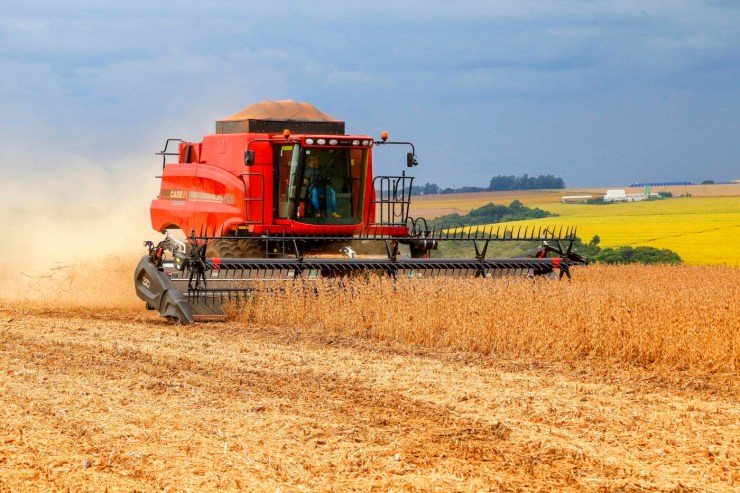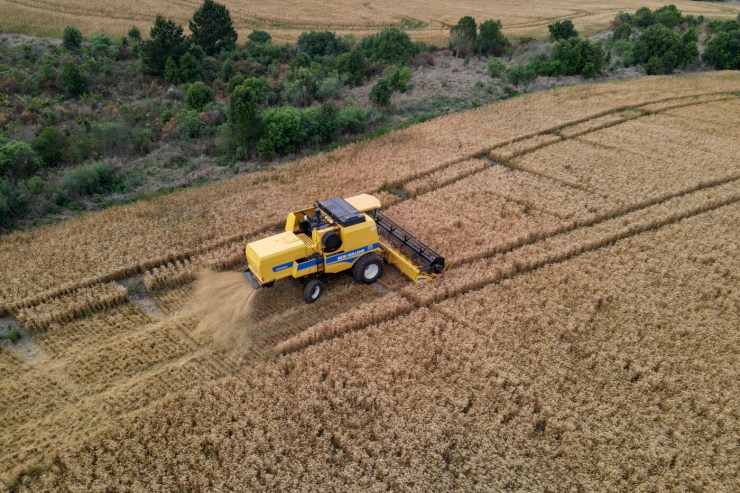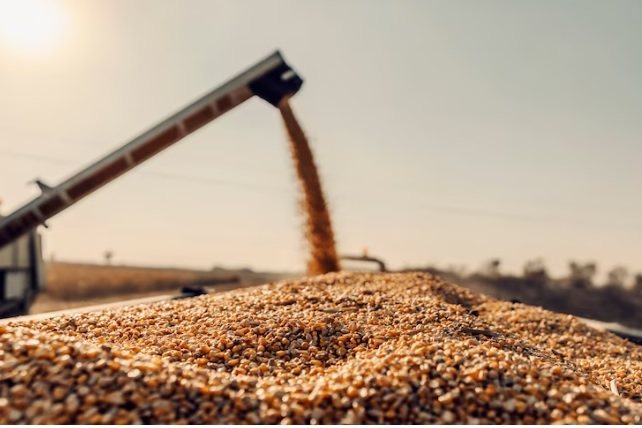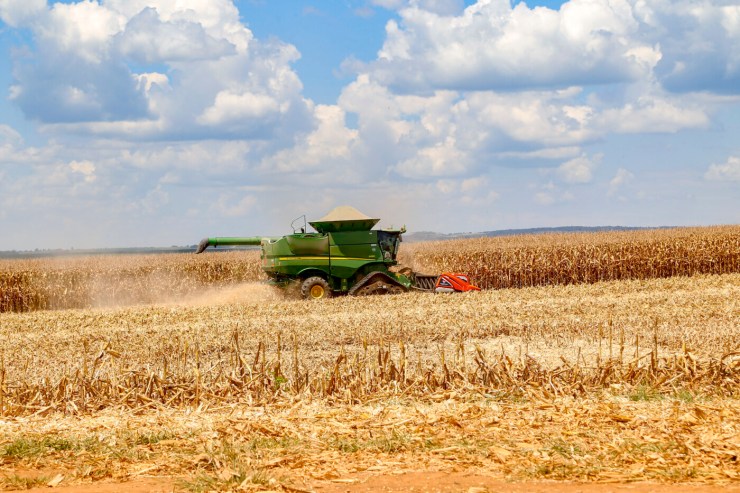The Systematic Survey of Agricultural Production (LSPA), released (14) by the IBGE, shows that the national harvest of cereals, legumes and oilseeds should total 340.5 million tons in 2025. This is 16.3% or 47.7 million tons higher than the harvest obtained in 2024 (292.7 million tons). Compared to June, the estimate registered an increase of 2.1%, an increase of 7.1 million tons.
The area to be harvested this year is expected to be 81.2 million hectares, representing an increase of 2.7% (2.2 million hectares more) compared to the area harvested in 2024. Compared to the previous month, the area to be harvested expanded by 49.0 thousand hectares (0.1%).

Photos: Gilson Abreu
"The July estimate for the 2025 harvest is a record in the IBGE's historical series. The growth in the Brazilian cereal, legume, and oilseed harvest compared to 2024 is a consequence of greater investments made by producers, who expanded their planting areas and invested more in production technology, driven by good prices for key grains during the planting of the 1st (rainy or summer) and 2nd (dry season) harvests. Another factor was the weather, which benefited crops in the field in most producing states. The most serious weather problems were observed only in Rio Grande do Sul," explains LSPA manager Carlos Barradas.
The main positive highlights of the 2025 harvest in July, compared to June, are the growth in production estimates for soybeans (165.5 million tons), corn (137.6 million tons), paddy rice (12.5 million tons), and seed cotton (9.5 million tons). Rice, corn, and soybeans represent 92.7% of the production estimate and account for 88.0% of the harvested area. In comparison with 2024, there were increases in the estimated production of herbaceous seed cotton (7.1%), rice (17.7%), beans (0.4%), soybeans (14.2%), corn (19.9%, being 14.1% for 1st corn crop and 21.4% for 2nd corn crop), sorghum (23.6%) and wheat (2.3%).
Still compared to 2024, but in terms of the area to be harvested, there was an increase of 5.6% in herbaceous cotton (seed), 11.4% in paddy rice, 3.3% in soybeans, 3.5% in corn (a decline of 4.9% in 1st corn crop and an increase of 5.9% in 2nd corn crop), and 10.9% in sorghum. On the other hand, the areas of beans (-6.1%) and wheat (-18.2%) showed reductions.
The estimated production of cereals, legumes and oilseeds for July showed a positive annual variation for all regions of the country: Central-West (21.4%), South (9.0%), Southeast (16.9%), Northeast (9.0%) and North (17.3%). Regarding the monthly variation, the North (1.9%), South (0.7%), Southeast (1.9%) and Central-West (3.3%) showed increases. The Northeast (-0.1%) was the only region with a negative monthly variation.
Compared to June, the main increases in production estimates were due to sorghum (13.5% or 585,211 t), corn 2nd crop (5.7% or 6,020,682 t), cashew nuts (4.0% or 5,605 t), grapes (2.1% or 42,983 t), oats (2.0% or 26,589 t), herbaceous cotton (1.6% or 154,083 t), rice (1.5% or 185,508 t), barley (0.6% or 3,339 t), corn 1st crop (0.6% or 156,042 t), beans 2nd crop (0.3% or 3,503 t) and soybeans (0.2% or 390 204 t).

In the opposite direction, there were falls in the production estimates for 1st crop beans (-6.7% or -76,488 t), tomatoes (-6.7% or -318,774 t), 3rd crop beans (-5.2% or -43,796 t) and wheat (-3.4% or -275,018 t).
"The record corn and sorghum production in 2025 is due to the expansion of planting areas and the favorable climate for these crops during both harvests, particularly the second corn harvest in Mato Grosso, the largest national producer of this grain. This increase in production is due to the growing demand for the grain, as it is used in the production of feed to meet Brazil's animal protein production (chicken, pork, and beef), as well as to meet the growing production of corn ethanol, with many plants being installed in the state to utilize this grain," adds Carlos.
With a 32.4% share, Mato Grosso once again leads national grain production
Mato Grosso leads as the largest national grain producer, with a share of 32.4%, followed by Paraná (13.4%), Goiás (11.4%), Rio Grande do Sul (9.5%), Mato Grosso do Sul (7.5%) and Minas Gerais (5.6%), which, together, represented 79.8% of the total. Regarding the shares of the Brazilian regions, the panorama is as follows: Central-West (51.5%), South (25.1%), Southeast (8.9%), Northeast (8.2%) and North (6.3%).
The main positive variations in production estimates, in relation to the previous month, occurred in Mato Grosso (5,536,658 t), Minas Gerais (561,874 t), Paraná (479,700 t), Santa Catarina (245,226 t), Tocantins (242,795 t), Bahia (160,380 t), Rondônia (130,647 t), Goiás (29,289 t), Roraima (21,687 t), Maranhão (5,162 t), Mato Grosso do Sul (408 t), Acre (47 t) and Rio de Janeiro (7 t). The most relevant negative variations were observed in Rio Grande do Sul (-101,540 t), Paraíba (-76,892 t), Ceará (-59,501 t), Piauí (-46,775 t), Rio Grande do Norte (-12,701 t), Sergipe (-6,490 t) and Amazonas (-65 t).





